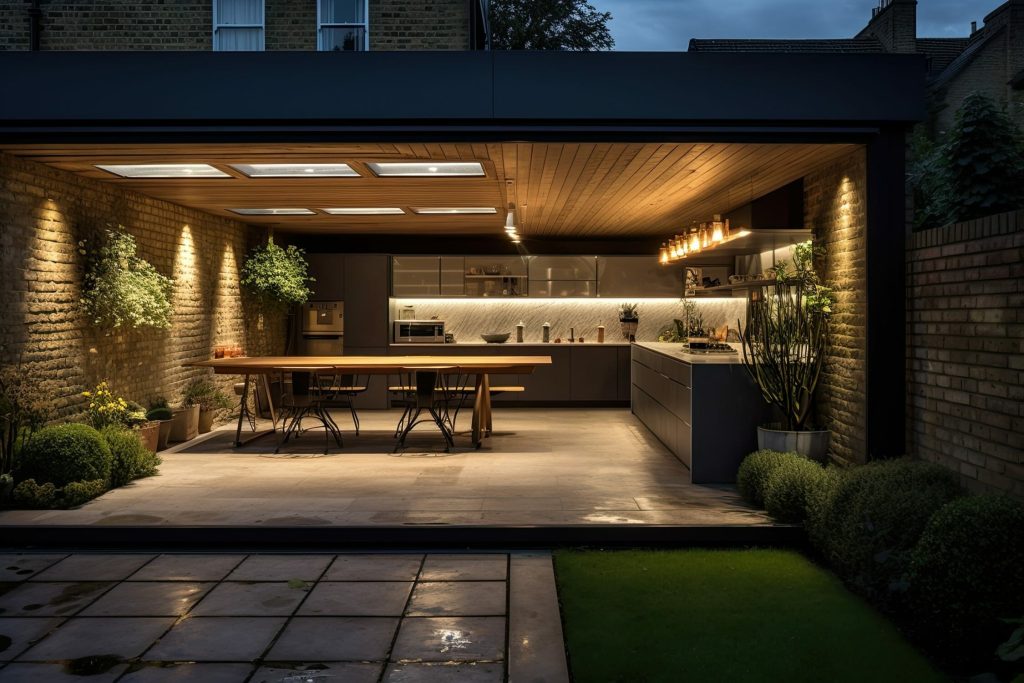
Interior design architecture shapes our daily lives, influencing our comfort, productivity, and overall well-being. From residential homes to commercial spaces, the artful blend of form and function in interior design architecture is key to achieving a satisfying aesthetic and functionality. This in-depth exploration of interior design architecture offers a thorough guide, addressing common challenges and offering proven strategies to achieve exceptional outcomes. This article will delve into the principles of interior design architecture, from initial idea development to final execution. We’ll explore various design styles, determine crucial elements, and offer practical examples to help you understand the design process.
Understanding the Core Principles of Interior Design Architecture
Defining Interior Design Architecture
Interior design architecture isn’t merely about aesthetics; it’s about creating spaces that seamlessly integrate form, function, and the client’s desires. It involves thoughtful planning, meticulous execution, and the careful consideration of a variety of elements such as lighting, material selection, spatial arscopement, and color palettes. A achievementful design project balances both form and function. The objective is not only to create visually appealing spaces but also to maximize their practicality and efficiency.
determineing Design Challenges and Their Solutions
Many clients face challenges when designing their interior space. Common issues include conflicting design preferences, budgetary constraints, and managing complex layouts. Designers must proactively anticipate and address potential obstacles and ensure open communication with the client throughout the design process. Experienced architects and designers have strategies in place to navigate these challenges effectively, and open communication is crucial. Proactive problem-solving often involves understanding and addressing client concerns early on in the process, ensuring a achievementful and harmonious collaboration.
Exploring varied Interior Design Styles
Related Post : How To Start Interior Design
Modern Interior Design Trends
Modern interior design embraces clean lines, minimalist aesthetics, and a focus on functionality. This style utilizes neutral colors, simple shapes, and strategically placed furniture to create a sense of calm and spaciousness. It often utilizes natural light and open layouts to maximize space. Modern interior design emphasizes functionality and durability, making it a timeless choice.
Embracing Sustainable Design
Clients are increasingly seeking eco-conscious options in interior design architecture. Sustainable design focuses on minimizing the environmental impact of construction and material choices. Utilizing recycled or locally sourced materials, incorporating energy-efficient appliances, and implementing natural lighting and ventilation are just some of the strategies architects employ to contribute to a greener environment.
Spatial Planning and Layout
Importance of Space Planning
Careful space planning is crucial for creating a functional and efficient interior design. It involves analyzing the available space, determining optimal furniture placement, and considering the flow and circulation within the room. A well-planned space can transform a house into a home. By considering these points, designers can maximize the functionality of the space and avoid unnecessary design conflicts that arise from poor planning.
The Impact of Layout on User Experience
The layout directly impacts how people interact with the space. Consideration of traffic flow and visual hierarchy will greatly influence a client’s overall experience of their interior space. A thoughtfully laid-out space encourages the ease of moving through the space. By ensuring easy movement from one area to another, the space functions better for its intended use.
Material selection and Finishes
Choosing the Right Materials
The selection of materials plays a vital function in the overall aesthetic and functionality of the interior design. Factors such as durability, maintenance, and environmental impact are crucial considerations. Material selection impacts the longevity of a project. varied materials evoke distinct moods and textures, influencing the overall ambiance of the space.
Lighting and its Impact on Ambiance
Strategic Lighting Design
Lighting design is essential for creating the desired atmosphere in any interior space. Natural light should be maximized, and strategically placed artificial lighting should enhance the room’s functionality and aesthetic appeal. By using ambient, task, and accent lighting effectively, you can create a space that is both beautiful and functional.
Frequently Asked querys
What is the difference between interior design and interior architecture?
Interior design focuses primarily on the aesthetic elements of a space, including furniture, color, and textiles. Interior architecture, on the other hand, considers the entire built environment, including the structural elements, space planning, and building design facets, providing a holistic approach. The overlap between the two is often considerable, as a achievementful interior design project requires a deep understanding of the architectural elements and the interplay of the interior space with the rest of the building. Interior architects focus on the complete building design and can be considered more extensive than interior designers.
How can I select the right interior design architect for my project?
When selecting an interior design architect, it’s essential to consider their experience, portfolio, and design philosophy. studying their past projects and reviewing client testimonials can offer valuable insights. Look for architects who demonstrate a clear understanding of your specific needs and preferences. Communication skills and a keen attention to detail are crucial. Communication and mutual understanding are key facets of an effective working relationship.
In conclusion, mastering interior design architecture is a multifaceted endeavor that demands a blend of artistic vision, technical proficiency, and a deep understanding of client needs. By carefully considering the principles outlined in this article, you can transform spaces into functional and aesthetically pleasing environments that resonate with the occupants. To further enhance your design expertise, explore specialized courses, collaborate with experienced architects, and continuously seek inspiration from various design styles. Your journey toward becoming a top interior design architect begins with thoughtful planning and meticulous execution. Begin by defining your design vision, and let your passion for creating beautiful and functional spaces guide your actions.